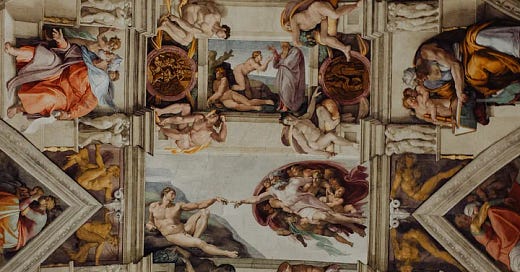Photo by Calvin Craig on Unsplash
In 1512, Pope Julius II held a special Vespers service. It was an evening event to inaugurate the Sistine Chapel after Michelangelo had finished four years of painting frescos on the ceiling. It’s now the most visited room in the world.
If you have ever visited the Sistine Chapel in the Vatican, you will likely have heard the guards say, at regular intervals, “No photo! No photo!” There are signs everywhere forbidding both photography and video, and the staff enforces this every few seconds.
I have experienced this first-hand. I was shuffling into the room, checking my phone, and a largely disinterested guard tapped me on the shoulder and pointed to my mobile, wagging his finger. I had been pre-emptively warned. I was one of 6 million visitors that year and from what I saw, nearly everyone was quickly snapping a picture and then being told off.
So, what i…
Keep reading with a 7-day free trial
Subscribe to Intriguing Times to keep reading this post and get 7 days of free access to the full post archives.





